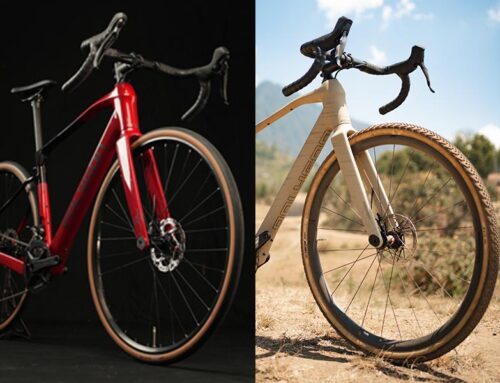When it comes to cycling, having the right bicycle lights is crucial for both safety and performance. Proper bike lights not only make you more visible to others but also help you see the path ahead, reducing the risk of accidents. Without proper lighting, cyclists face increased dangers and potential legal issues.
The Importance of Proper Bike Lighting
Cyclists face unique challenges when riding in low-light conditions. Whether you’re commuting to work, enjoying a night ride, or participating in early morning training, visibility is critical. Proper bike lighting helps in two main ways:
Visibility to Others: The primary purpose of a bike light is to make sure you are visible to other road users. Bright lights, especially those with high lumens, ensure that drivers, pedestrians, and other cyclists can see you from a distance. This reduces the likelihood of collisions, especially in poor lighting conditions or inclement weather.
Illumination for the Rider: A good bike light also illuminates the path ahead, allowing you to navigate safely. This is particularly important on unlit roads, trails, or uneven surfaces. Without proper lighting, you may miss obstacles, potholes, or changes in the road, which can lead to accidents.
Legal Considerations
In many regions, regulations require cyclists to use lights during certain hours. Failing to comply with these regulations can result in fines or penalties. For instance, in Singapore, cyclists must have a white front light and a red rear light when riding at night. Understanding and adhering to these regulations is essential for both safety and legality.
How to Choose the Best Bike Light
Selecting the right bike light involves several considerations. Here’s a comprehensive guide to help you make an informed decision:
1. Light Performance: Lumens and Beam Patterns
When choosing a bike light, brightness is a critical factor. Bike lights are measured in lumens, which indicates the amount of light produced. However, more lumens don’t always mean better performance. It’s essential to balance brightness with beam pattern.
For urban commuting and visibility, a light with 200-600 lumens is often sufficient. If you ride in rural areas or on trails, you may need 800 lumens or more to illuminate the path effectively. Consider lights with adjustable beam patterns. A wide beam is useful for illuminating the road directly in front of you, while a focused beam can help with long-distance visibility.
2. Type of Ride and Light Type
Bike lights cater to various riding needs and environments.
For commuting, prioritize visibility over high-lumen output. Choose lights with dual modes (constant and flashing) to enhance your presence in urban areas, and opt for models with side illumination features to improve safety at junctions. Compact designs and additional safety features like integrated reflectors can also be beneficial.
For road cycling on unlit roads, powerful illumination is crucial. Look for lights with at least 800 lumens to effectively light up the path and spot hazards. Multiple modes, including high-beam settings, provide flexibility for different conditions and help manage battery life. Long battery life and USB charging options are essential, with some e-bikes offering direct charging from the bike’s battery.
Off-road lights must handle rugged terrain and varying conditions. A lumen count of 1,000 or more with a broad beam is ideal for trail illumination. Adjustable light intensity and helmet-mounted lights offer versatility for different trail conditions. Durability is important, and rechargeable batteries with through-charging from e-bike batteries ensure long-lasting performance.
3. Rechargeable vs. Disposable Batteries
Bike lights come with various power sources, rechargeable lights, and disposable batteries. For the rechargeable lights can be charged via USB. They are typically more eco-friendly and cost-effective in the long run since you don’t need to buy new batteries regularly. While disposable batteries can be convenient for quick replacements, they are less environmentally friendly and may incur ongoing costs.
4. Run Time and Battery Life
Battery life is crucial for bike lights, particularly depending on the duration of your rides. For short trips, a light with a battery lasting a few hours will typically suffice. However, for longer rides or multi-day trips, it’s essential to choose a light with extended battery life. Additionally, features like low-battery warnings can be very helpful to ensure you’re not caught off guard.
5. Mounting and Weight
When selecting a bike light, the mounting system and weight are key considerations that can impact your ride. Opt for a light with a secure and adjustable mounting system to ensure it attaches and detaches easily, providing convenience and stability during use. Additionally, choose a lightweight light to avoid adding unnecessary bulk to your bike, while still ensuring it is robust and durable enough to withstand various conditions.
6. Budget
Bike lights come in a wide range of prices. Determine your budget and find a light that offers the best features within your price range. Remember, investing in a quality bike light can enhance your safety and overall riding experience.
Learn more about bike lights based on lumens and other factors in “Choosing Bike Lights: How Many Lumens Do You Really Need?”
Conclusion
Choosing the right bike light is a crucial decision for ensuring your safety and enhancing your riding experience. Whether you’re commuting, trail riding, or racing, the right light can make all the difference. Consider factors like brightness, battery life, mounting, and weight when making your choice.
If you’re looking for high-quality bike lights, Rodalink Singapore offers a range of top-rated options. For rear visibility, check out the Knog Lil Cobber Rear Light, known for its bright and compact design. For powerful front illumination, consider Entity HL800 800 Lumens USB Rechargeable Front Light, which provides 800 lumens of brightness and is USB rechargeable. Explore more options to find the perfect bike light for your needs here.
For a detailed look at the best bike lights of 2024, visit our article “Best Bike Lights of 2024”. Invest in the right bike light and ride with confidence!


